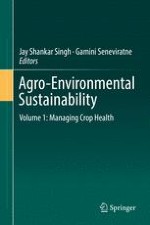
2017 | OriginalPaper | Buchkapitel
1. Microbial Signaling in Plant—Microbe Interactions and Its Role on Sustainability of Agroecosystems
verfasst von : G. Seneviratne, M. L. M. A. W. Weerasekara, D. Kumaresan, J. S. Zavahir
Erschienen in: Agro-Environmental Sustainability
Aktivieren Sie unsere intelligente Suche, um passende Fachinhalte oder Patente zu finden.
Wählen Sie Textabschnitte aus um mit Künstlicher Intelligenz passenden Patente zu finden. powered by
Markieren Sie Textabschnitte, um KI-gestützt weitere passende Inhalte zu finden. powered by